Are all Portulacas edible? My personal experience says no.
In the picture above, growing side by side, are two Portulacas found locally, P. oleracea with yellow blossoms and P. pilosa with reddish pink blossoms. The yellow one is called the “Common Purslane” whereas the other’s informal names are Pink Purslane and Kiss-Me-Quick. The Common Purslane is probably native to India or thereabouts (though that is debatable) and is found nearly around the world. Pink Purslane is native to the Americas.
That Common Purslane is edible is not in doubt. Nearly everywhere it grows all above-ground parts are on the menu except in the United States. Why Purslane is not on main stream grocery store shelves in this country is a mystery. I see it growing everywhere and a lot of it goes home with me for supper or transplanted into the garden. It’s not known for taking up bad chemicals so often all it needs is to be rinsed off. Portulaca pilosa is another matter. To be blunt raw it burns my throat a little and upsets my tummy some. The discomfort never reaches the level of needing any attention beyond reminding myself not to try it again. The family is not a toxic one unless you are a grazing animal. (There have been some report out of Australia that farm animals can eat too much Portulaca overdosing on the oxalic acid it contains. These are perhaps isolated cases.) My experience with it raw has led me to never try it cooked.
As for the commercial varieties one sees in nurseries and the like I have no idea if they are edible or not. They tend to have large or double blossoms and a range of colors including orange, red, yellow and pink. When I asked Forager Emeritus Dick Deuerling about them 20-some years ago he said he didn’t know if the commercial ones were edible either and was not inclined to personally find out. To read more about Purslane go here.
Which yam is it? Now that summer is here one can go looking for yams vines so later in the year we know which roots to dig up. We have to wait until around now to go scouting because two local yams sprout at different times. The dreaded Air Potato can be found shooting up in March or April. The yam with the preferred edible root — the Winged Yam — is always a few weeks if not a month or more later. It just likes warmer weather. Now that both are up it is easy to spot the Winged Yam, as we did in a foraging class this weekend in Orlando. There are several key things to look for: A square stem, pairs of leaves, a twist which at eye level goes from your lower left to your upper right, and a leaf that is longer than wide. To read more about the Winged Yam, which is the largest caloric payoff locally, click here.
While Elderberries are supposed to fruit all year here they favor the spring time and can ripen into early summer. There doesn’t appear to be much organization to their ripening in that one can find ripe bunches in one area then move a few miles and fine unripe ones. But generally this weekend all we saw were dark, ripe Elderberries. Our local species is edible but farther north there are red elderberries were present a challenge to the forager: The pulp is edible but the seeds are not. This did not stop many natives from processing Red Elderberries but it does highlight how important they were to their survival. It was a lot of work but a necessary food source. To read about Elderberries, go here.
Upcoming Foraging Classes:
Saturday July 18th, Dreher Park, 1200 Southern Blvd., West Palm Beach, 33405. 9 a.m.
Saturday, July 25th, Boulware Springs Park, 3420 SE 15th St., Gainesville, FL 32641 9 a.m.
Sunday, July 26th, Jervey Gantt Recreation Complex, 2390 SE 36th Ave., Ocala, FL, 34471, 9 a.m.
To learn more about classes go here.
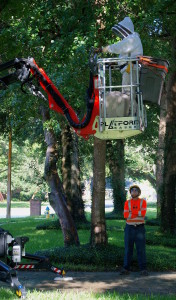
After a quick tutorial about lift controls bee keeper Phil Robertson ascends 40 feet to collect some 50,000 bees.
Foraging can include honey if you know what you’re doing. This past week I helped (in a minor way) a friend collect a wild bee hive from a dying tree that had to be cut down. The plan was (for him) to put the hive in a large trash can where upon I would drive the 50,000 or so bees in my van to their new home, a nice box in a back yard. That was the plan. The very night before the weather knocked much of the hive down about 20 feet to lower branches. This required collecting from two spots. Altogether the hive was larger than a 50-gallon trash can and the bees were not pleased about being abused by Mother Nature or moved. Fortunately they were not Africanized bees and only chased us unsuited ones a few times. I had visions of a vehicle accident and tens of thousands of bees looking for someone a few feet away to blame but they were transported safely. No one got stung.
Need to identify a plant? Looking for a foraging reference? Maybe you have a UFO, an Unidentified Flowering Object, you want identified. On the Green Deane Forum we — including Green Deane — chat about foraging all year. And it’s not just about warm-weather plants or just North American flora. Many nations share common weeds so there’s a lot to talk about. There’s also more than weeds. The reference section has information for foraging around the world. There are articles on food preservation, and forgotten skills from making bows to fermenting food. Recent topics include: Great Ragweed, Another NJ Tree, Tree South NJ, Cultivated Flowers, Pawpaws Almost Ripe, Cross Wine, Quite the Taproot, Venation is Plantago-esque, Sumac? Unknown Ornamental, Pipsissewa uses? Artemisia douglasiana, Smilax, Yet Another Vine, Is This Cilantro or some kind of nettle? Mulberries Mulberries as far as the eye can see. What Kind? tincture or tea? Becoming a Wild Food Expert, Latex Strangler Vine in Blossom, Seminole Pumpkin Squash, Removing Oxalates, and I Believe This Is a Tulip Tree. You can join the forum by clicking on the button on the upper right hand side of this page.
This is newsletter #169. To subscribe to Green Deane’s weekly EatTheWeeds newsletter, go to the upper right side of this page.

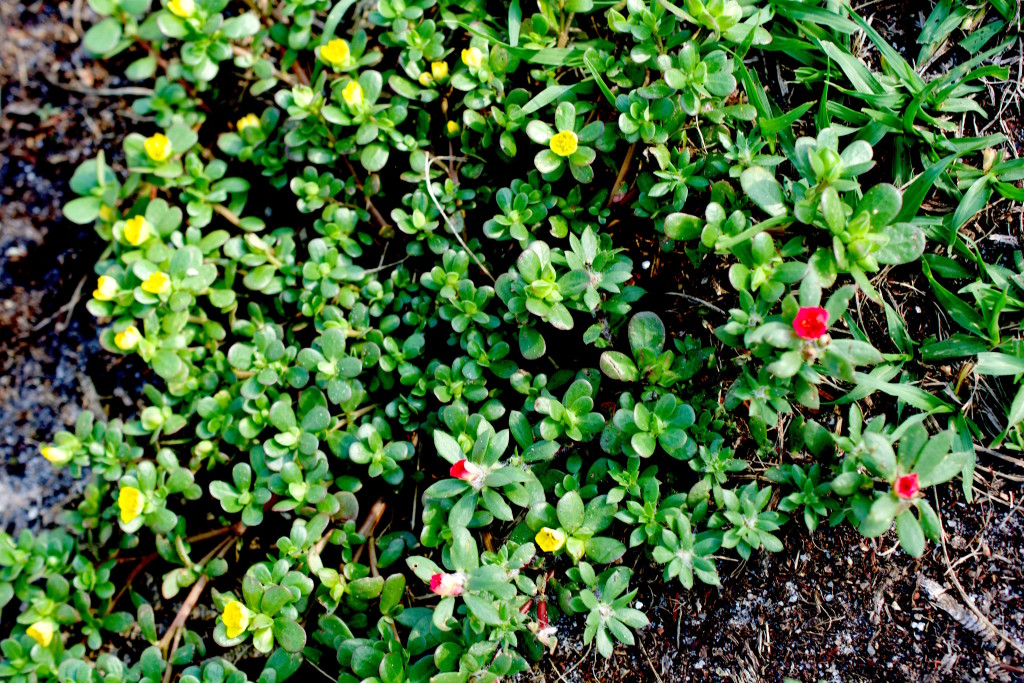
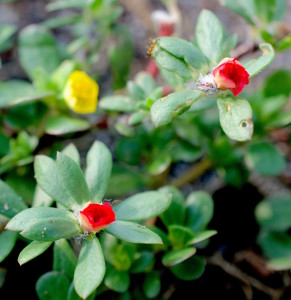
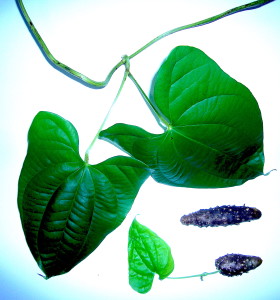
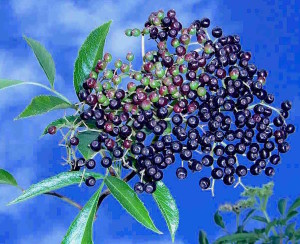

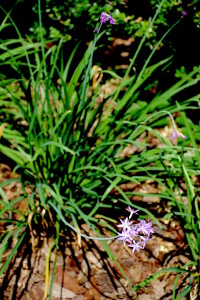

Here in Tulsa County, the purple elderberries are just beginning to produce. Most are unripe at this point. I guesstimate about another couple weeks, and they’ll be ready.
Hey Deane, what happened to the “wuzzit” pics to identify the plants? I loved that feature?!
There is a series I just watched on all our amazing plants that was just awe inspiring and I highly recommend if any of you guys get Netflix, to watch “How to Grow a Planet”! A whole different perspective on a fascinating topic! Best doc I’ve seen in ages!
They haven’t gone away… it just depends on what I come across during the week.
The society garlic in the photo is edible; bulbs and stems chopped and used in stews and vegetable dishes, and flowers in salads. I also use dried flowers in tea to help upset stomach. There are many uses of this plant from landscaping to pest repelent of moles, deer, ticks, fleas, and masquitoes.
I have discovered that if I grow Society Garlic and Day Lillies together, both plants grow much better. And this is nice since I raise both dual purpose as a landscape plant and garden edible.
Thanks for the info on companion planting of daylilies and society garlic, Chaz.
Not all that glitters is gold. Not all Portulacas are edible. Fortunately, in our area the yellow blossomed purslane is dominant, easily available all times for cooking with meat, tomato and spices to make a favourable meal.
Huge number of bees, humming bees, butterflies, moths and dragon flies means a rich rainy season as well as a fairly nice weather in Khartoum. Last year I prepared a bee hive shelf aiming to collect some honey. I did maintain a suitable environment by growing some plants like Senna orientalis and peppermint flowers of which attract bees; that is besides other blossoming plants. Nowadays, contrary to last year one rarely see these insects hovering around. One reason may be health authorities have worked hard to eradicate malaria causing mosquitoes using too much insecticide thus upsetting the life cycle of those other insects. However, our weather forecast service has predicted a “unique rainy season” – a kind of warning to the people to be careful and not to be extravagant in consuming dietary products and reserve part of their food for an expected famine. Help us Oh God.